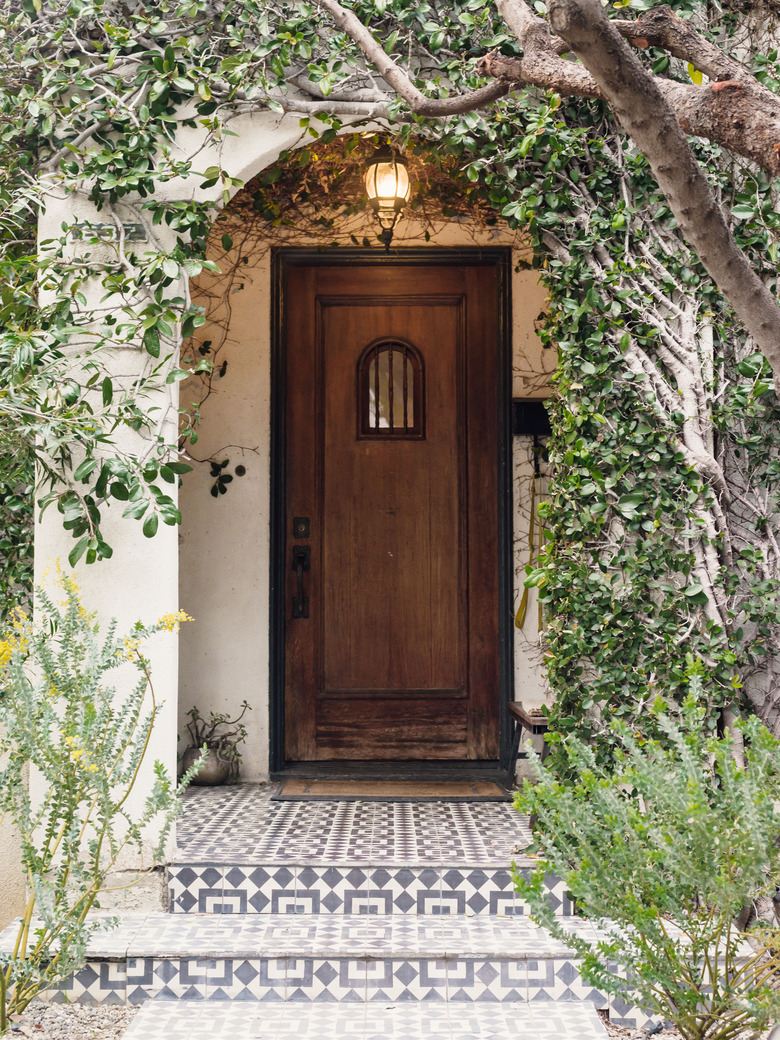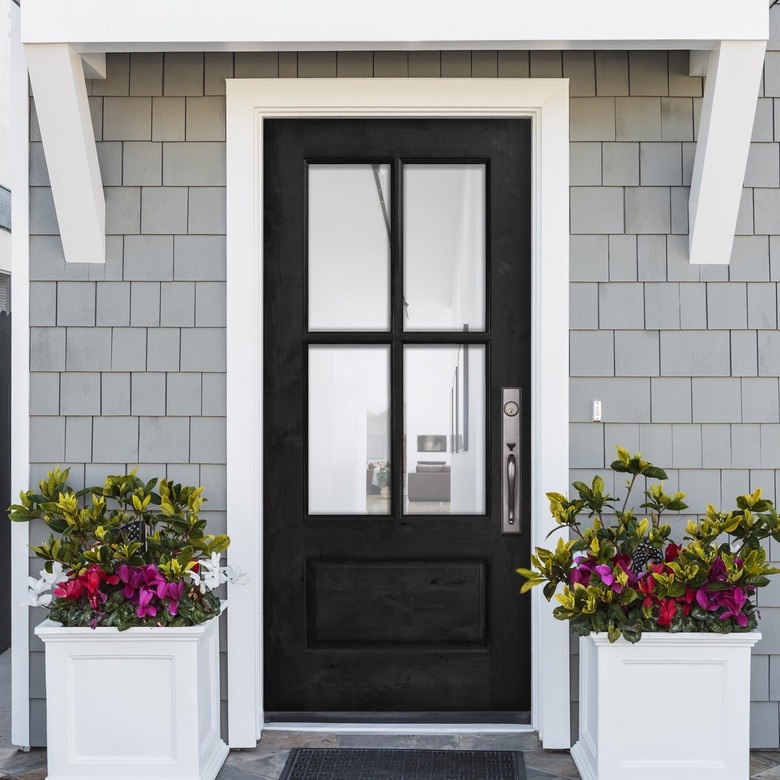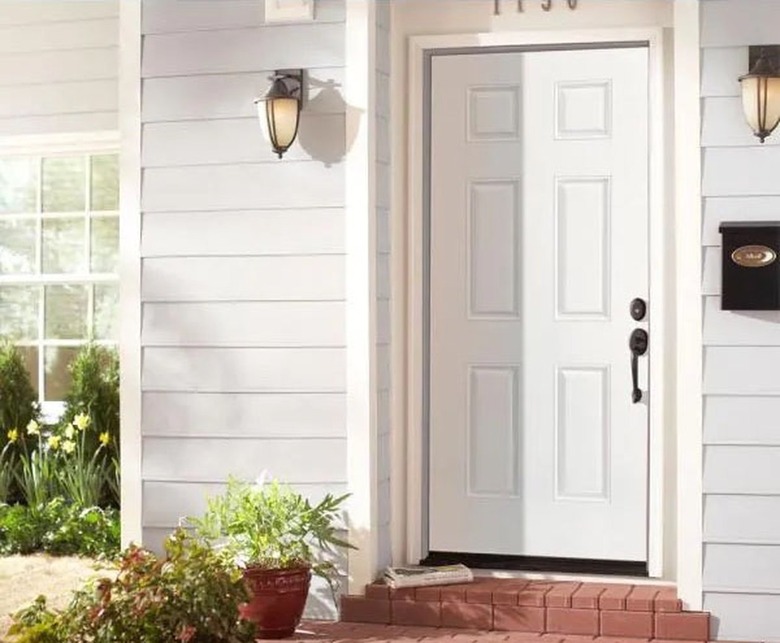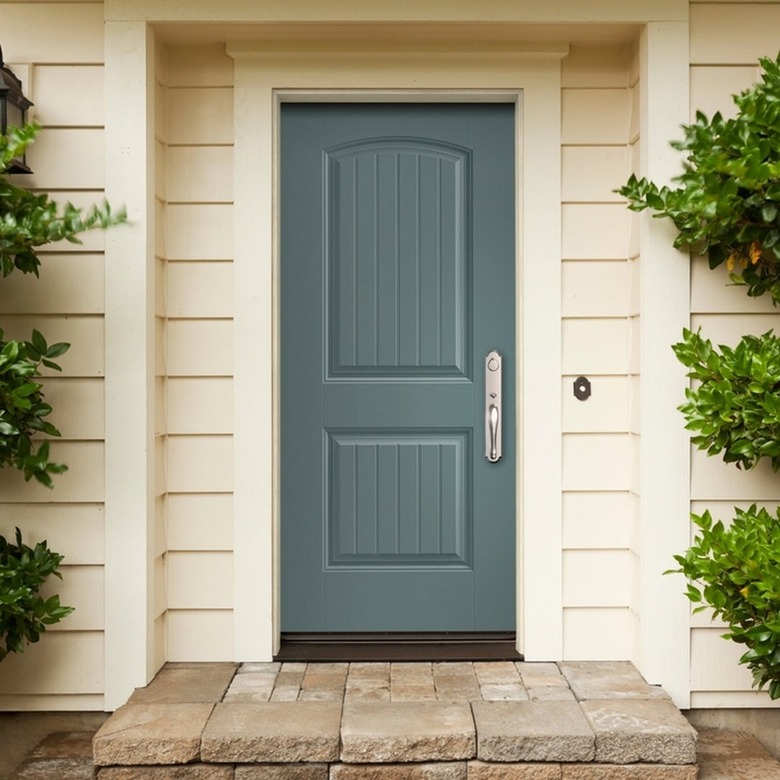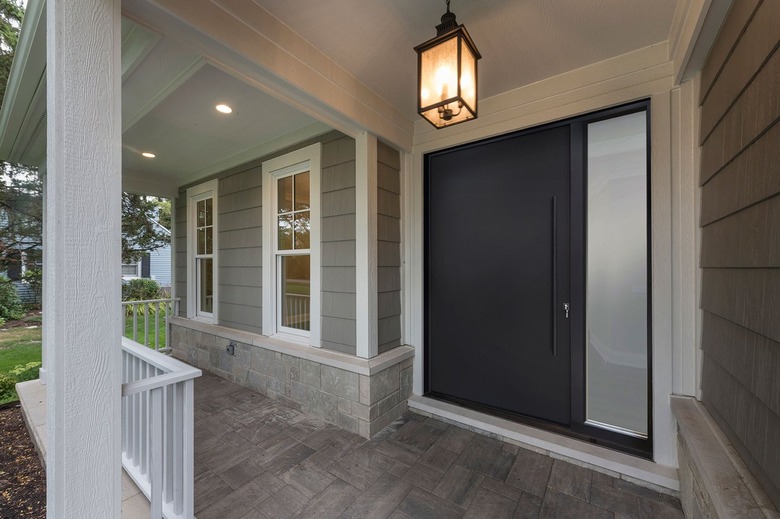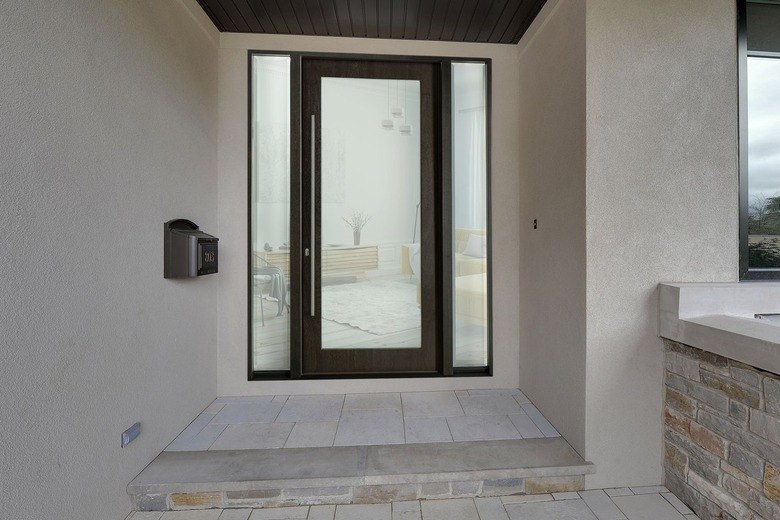The 5 Best Materials To Consider For A Sturdy Front Door
In terms of feng shui, the Chinese art of home harmonization, the front door of your house is the gateway to chi, or energy. If you want guests to feel welcome, your front door should be both attractive and inviting. The front door also keeps out burglars, so it also has to be sturdy. Finally, it has to provide good insulation so you don't lose heat in the winter and the cool air your air conditioner produces in the summer, both of which will drive up your energy costs.
Good looks, strength, and energy efficiency — these are the three main qualities for which homeowners look in any entry door material but especially that of the front door. A number of door materials can provide all these benefits, but choosing the best one for your house also involves cost and maintenance considerations. There's a wide disparity in prices, and some materials are definitely easier to keep looking great than others.
You can count with the fingers on one hand the most widely available front door materials, but less common ones are also worth a look depending on your priorities. You can boil down your choices to five different options.
1. Wood
1. Wood
Who doesn't like real wood? It's the traditional and most natural choice for a front door, but in today's market, wood doors are the priciest ones, and they're also the ones that require the most maintenance. Wood is the most customizable door material and by itself is an excellent thermal insulator. Manufacturers improve the insulation value of more thermally conductive materials, such as steel and fiberglass, by packing the cores with polyurethane foam, but solid wood needs no such insulating core.
You can choose the wood species that best matches your home's exterior and coat it with a clear finish, or you can opt for a relatively inexpensive softwood and paint it. Either way, you'll end up spending at least $800 (high-end wood doors can cost as much as $4,000), and that doesn't include installation. You can save a little by choosing a solid-core wood veneer front door over a solid wood door but not enough to make wood more affordable than some of the other common materials. Don't forget that solid wood, being a natural material, is subject to expanding, contracting, and warping, and wood veneers have a habit of lifting and peeling as the years go by.
2. Steel
2. Steel
Half of all entry doors sold today are steel. A decorative pre-hung steel door costs about $700, which is less than the least expensive wood door, and a not-as-decorative slab door can be had for a mere $140.
Steel doors aren't steel through and through; they usually feature a 24-gauge or thicker steel skin covering a core made of polyurethane foam or Masonite or some other type of fiberboard, any of which provides better insulation than the steel could provide by itself. Steel doors typically come with hardware installed or pre-drilled holes for the hardware of your choice.
You can paint a steel door to match your home's exterior or interior, and you should paint it because steel is prone to rusting, which is one of the drawbacks of this door material. Steel also dents, but you can usually fix dents by filling them, by heating them with a heat gun and then cooling them quickly with compressed air, or by pulling them out with a dent puller. Be warned, however, that repairing dents in steel doors isn't always easy.
3. Fiberglass
3. Fiberglass
Rounding out the list of the three most common front door materials, fiberglass combines good performance with low maintenance. It won't dent, and it can be stained or painted to match your home provided you use the right kind of finish. Acrylic, polyester, polyurethane, and epoxy finishes are recommended (oil-based ones aren't), but since fiberglass doors come pre-painted in a number of colors, chances are you won't ever have to break out the paintbrush.
Like a steel door, a fiberglass one has a skin that covers an insulated core of polyurethane foam or a similar material, and the skin is often textured with a faux wood grain. Fiberglass doors aren't as expensive as wood ones, but they aren't the least expensive option. A fiberglass front door without windows may cost about $400, but more decorative ones with inset and transom windows can cost $3,000 or more.
Fiberglass wears better than steel, and it won't rust or dent. The typical warranty period is 15 to 20 years, but with proper care, a fiberglass door can last much longer — some say as much as 100 years.
4. Aluminum
4. Aluminum
Aluminum is a material used more often for a storm door or a screen door than for an entry door, but it's a stylish substitute for steel. Like steel doors, aluminum ones have an insulated foam core enclosed by a metal skin, and they come in various styles with pre-drilled holes for hardware.
One of the advantages of aluminum over steel is that it doesn't rust, but it does tend to show ugly water spots if left unfinished. The best defense against water spots is to paint the door with a good-quality exterior metal paint. Aluminum is more lightweight than steel, so an aluminum door puts less stress on the door jamb, but it also doesn't insulate as well, so it's not the best choice for extreme climates. In the right climate, however, an aluminum front door is a low-cost, low-maintenance alternative to steel when the crispness of a metal surface is desired.
5. Glass
5. Glass
The only place you're likely to find a solid glass door is on a shower stall, but you can find entry doors that are mostly glass with frames made of wood, UPVC, fiberglass, or even steel. This type of door isn't appropriate for every setting. For reasons of privacy, a glass door works best in a sheltered entryway, not one exposed to the street. You might see glass doors complementing architectural styles that highlight natural elements, such as stone or water features, or open, airy indoor areas perhaps accented with greenery, marble floors, and lush carpeting.
The glass in an entry door should be tempered or laminated for safety, and because a single pane doesn't provide good thermal insulation, two or even three panes separated by argon vapor barriers are preferable. Even then, the addition of wrought iron on the outside of the door may be desired to protect the glass and provide an ornate touch. When wrought iron is added in this way, it often takes over the design, leading some to identify the door as made of wrought iron. The primary door materials, however, are glass and whatever material makes up the frame — usually steel, wood, or fiberglass.
Some glass doors are heavy and require professional installation, but many are fairly lightweight and can be installed by homeowners. Some standard-size glass doors at home centers can be quite pricey, costing from $2,000 to $6,000, but there are also plenty of less expensive ones starting at a little over $300. If your entryway isn't a standard size, you'll probably need to have your door custom made, which ups the price considerably depending on who makes the door.
Storm Door Considerations
Storm Door Considerations
If you're replacing your front door with a new one, you probably don't need a storm door, and in fact, Energy.gov doesn't recommend installing one because it won't add much insulation value. On the other hand, if replacing your old, drafty front door isn't in your budget, adding a storm door might help reduce your energy costs. Many are made with double-pane glass and wooden frames or frames made of fiberglass or steel with foam insulating cores.
When shopping for glass storm doors, look for ones with low-emissivity glass, especially if the door is in a sunny location. The low-emissivity coating prevents damage to the front door caused by UV light and heat trapped between the doors.
